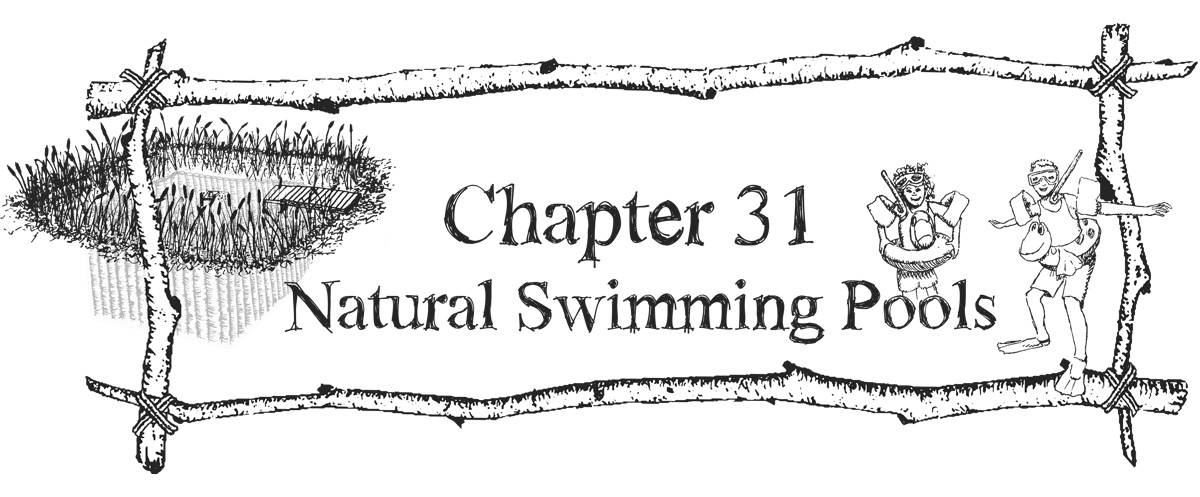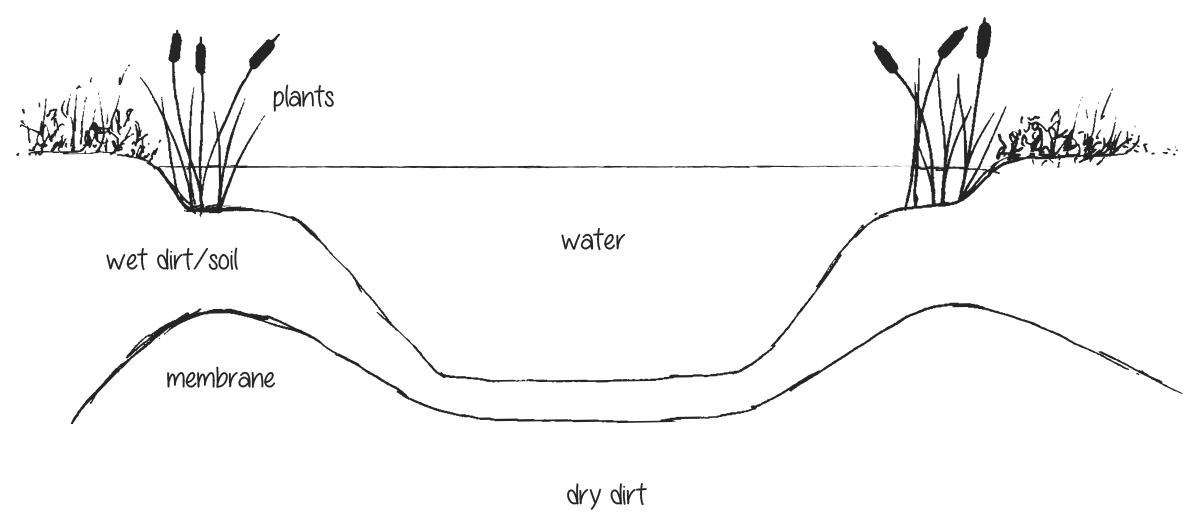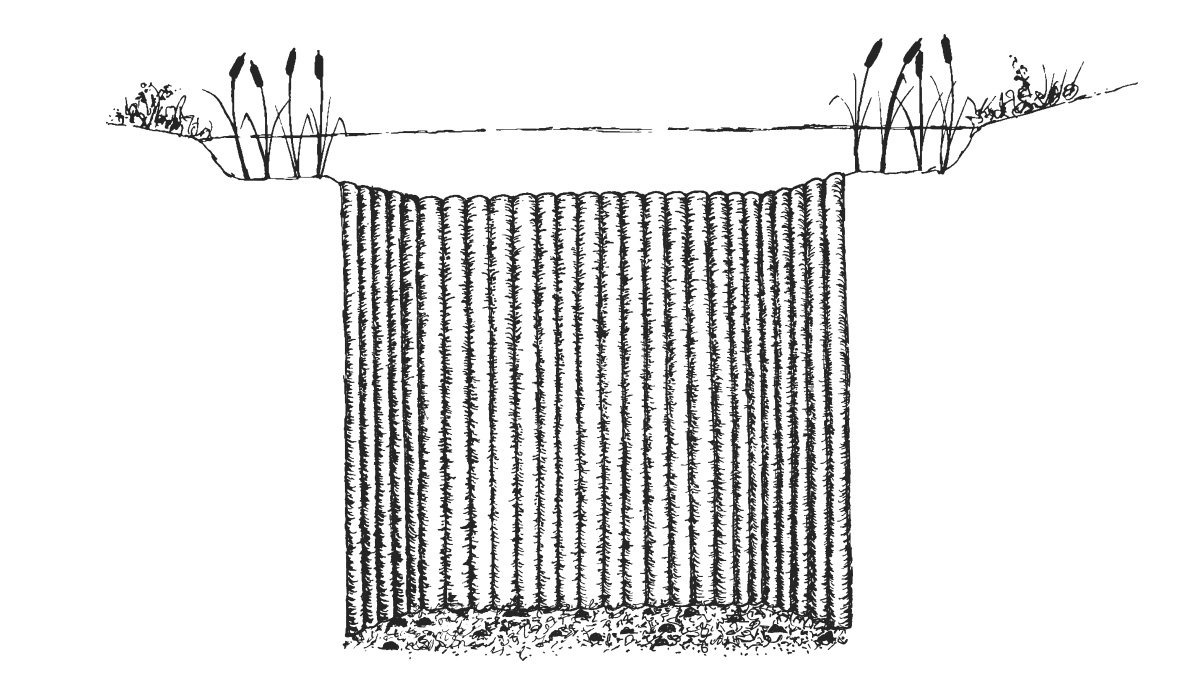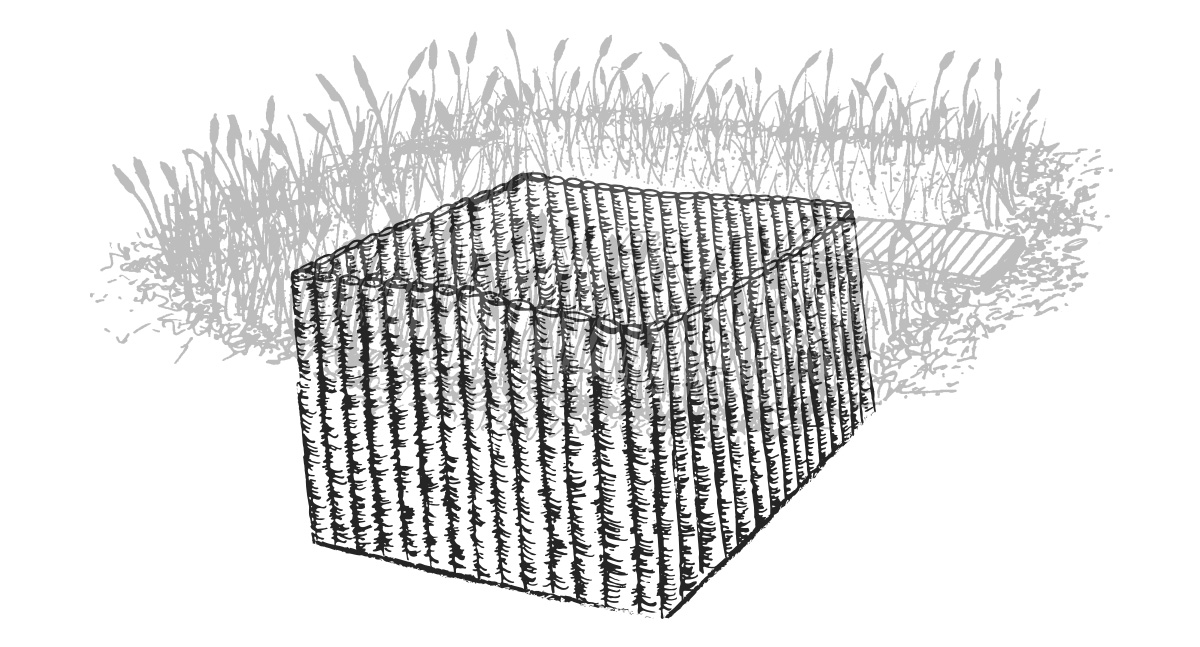
In some areas, nearly everyone owns a swimming pool. It’s a place to cool off on a hot day and a great space for kids to play with their friends.
On the list of things that we really need in life, a swimming pool doesn’t rank very high. It’s a major luxury item. A standard swimming pool might cost fifty thousand dollars or more to build and thousands of dollars a year to maintain. They are built with tons of concrete, heated with gobs of power from the grid, and filled nearly to the brim with toxic gick to keep them “clean.”
Rather than saying that everyone should live without one, I wish to embrace the luxury that comes with having a swimming pool and come up with ways to make it healthier, more enjoyable, and cheaper to build and operate at the same time.
Enter natural swimming pools.1 These beautiful pond-like constructs are divided into two areas: the swimming area and the cleaning area. In the cleaning area, the water is naturally cleaned by aquatic plants and wildlife. The clean water is then returned to the swimming area where it is enjoyed by people who appreciate that they are not swimming in gross pond water.
I think it’s possible to build a natural swimming pool for less than one tenth of the cost of having a conventional pool installed. No concrete, heated by the mighty power of the sun, and no toxic chemicals or artificial filters required.2 Plus, it’s a back-up reservoir in case there is ever a fire. It’s hard to see why most people wouldn’t want one of these.
Keeping the Water Clean
Have you ever seen a pool where people have let it go? They stop treating the water and they stop cleaning it. What happens? Typically, a layer of green pond slime forms on the surface. This is algae. Our mission is to create beautiful clear water that has no algae – without using chlorine.
Some ponds will have a powerful algae problem too.3 And yet, some don’t. So our recipe will be to come up with ways to have something pond-like without the algae.
A compost pile is made of “carbons and nitrogens.” Algae loves the nitrogens: poop, rotten green plant matter, dead bodies – all the stinky things that are rotting. You could also think of these things as nitrogen-heavy fertilizers. These are the things that make some plants grow big and dark green.
There are three ways to take the nitrogens out of the mouths of the algae (om nom nom):
Feed it to something else before the algae has a chance.
Offer the nitrogen a big carbon source so it can do the composting thing. Nitrogen is a little weird that way – it would far prefer to do the compost dance than the feed-the-algae dance (this is called “nitrogen immobilization”).
Have such a huge amount of water exchange that there isn’t opportunity for algae to set up camp in our spiffy swimming pool.
To take the nitrogen out of a pond, the old-school technique was to throw a few bales of straw into the pond. That is a lot of carbon which will activate nitrogen immobilization. Of course, today there is a 99% chance that the straw contains persistent herbicides which will make your growies sad (and we are depending on those growies to filter the water – more on that in a moment)! Take the extra step of making certain that the straw is organic. Similar tricks include throwing logs, or the root mass of a large tree, in the pond (side benefit – lots of hiding spaces for small fish).
Our approach works a bit like a freshwater aquarium. A super-freaky-big aquarium. Without glass. And you get to play with the fishes. There’s lots of plants and gravel and a way to move the water through the plants and gravel. Plants such as cattails, duckweed, and bulrushes take up excess nitrogen and other funky bits, as do zillions of bacteria and other beneficial critters in the gravel. At least 40% of the surface area of the pool is dedicated as the cleaning area – the bigger the proportion of cleaning area, the cleaner the water will be.
One way that some ponds get a huge algae load is that there is an overload of ducks, fish, or livestock – all contributing that funky algae food. Light stocking leads to clean water. Heavy stocking leads to comedy.
The next important thing to take care of is to increase the amount of oxygen in the water.4 Oxygen is vital in ensuring the survival of all of the plants and little critters in the water. Plants give off oxygen, but only during the day. At night they consume oxygen. And, without enough oxygen in the water to support them, most of the plants will be dead by morning and the water will get gross quickly.
A creek is loaded with oxygen as the water moves and is constantly getting turned over and over so that all the bits of water get exposed to air – then that oxygen-rich water can pour into your pond. But, since most natural swimming pools don’t have a creek, it is up to you to come up with an artificial substitute.5 A moment ago, I mentioned emulating the water filtration system of a freshwater aquarium. And that had a pump. Once we have a pump, we can fiddle with the water so that the pumping can make a micro waterfall that adds oxygen to the water!
A better approach is one presented in David Pagan Butler’s video Natural Swimming Pools: A Guide to Designing & Building Your Own.”6 Instead of a water pump, he used a bubbler like you would find in a fish tank. The energy cost is very low. And the bubbler causes the water in the pond to circulate gently, which is much better for the plants and the little critters than moving the water with a pump. The coolest thing about this system: a frog can go through it unscathed! It is possible that, if your oxygen needs are low, you might be able to get by with a pump (water or air) wired directly to a solar panel – something that runs just during the day.
Avoiding the Ice Bath
These solutions are for summertime swimming. Winter swimming will require augmentation with a rocket hot water heater and/or solar hot water and/or something else.
Our filter will make half the pool surface have very shallow water (just a few inches deep) with plants. This leads to a lot of heat collection. This alone will probably work for most people.
Sepp Holzer uses a technique of setting large, dark-colored boulders (weighing several tons each) into a pond with good sun exposure. The boulders soak up the heat and slowly release that heat over several months. The greatest sun exposure is in May, June, and July, carrying the heat into August and September. The addition of a sunscoop around the pool will also help to keep more of the sun’s heat in the area.

Adding a layer of insulation around a pool can help dramatically in very cold climates. I would like to suggest using some of the ATI ideas presented in chapter 30, especially the idea that dry dirt is six times as insulative as wet dirt. Unfortunately this approach requires a waterproof membrane of some kind, so I only suggest doing this if the other ideas aren’t enough for a warm swimming experience.

How Do I Build One? Gimmie! Gimmie Now!
While there are going to be many different designs for natural swimming pools, most of them are going to fit into two categories based on the site conditions: pool-esque and pond-esque.
Conventional swimming pools have vertical walls. If you don’t have very much space (like in the city, for example), then you’re going to need super steep walls in order to be able to have a swimming area with the depth you are looking for. This approach costs more than the pond-esque model because dirt doesn’t really like being vertical, especially dirt with water lapping up against it.
Instead of cement walls, I would like to suggest cedar or black locust logs. Cedar will last far longer underwater than in the air. And black locust will last more than 50 years out in the weather – I suspect that it will last more than a hundred years in this scenario. Just make sure you take the time to soak them in water long enough that they stop floating.7
Ponds can be lovely to swim in and don’t have vertical walls. They are much easier to build and thus also cost less to build, but they do take more space.
The bottom of both models can be built in the same way. I wish to eliminate felt and EPDM as options for sealing the pond, so I advocate Sepp Holzer’s approach instead.8 The idea is that you bring in a really big and heavy excavator and use the bucket to dig and shape your pool. Then once you’re done digging, put on the smallest bucket available and push the bucket down in such a way that the front of the excavator comes up. Repeat this across the entire pond and it should seal.
Now you just need to fill the pool, put in the plants, and enjoy a luxuriant dip on a hot summer day.


